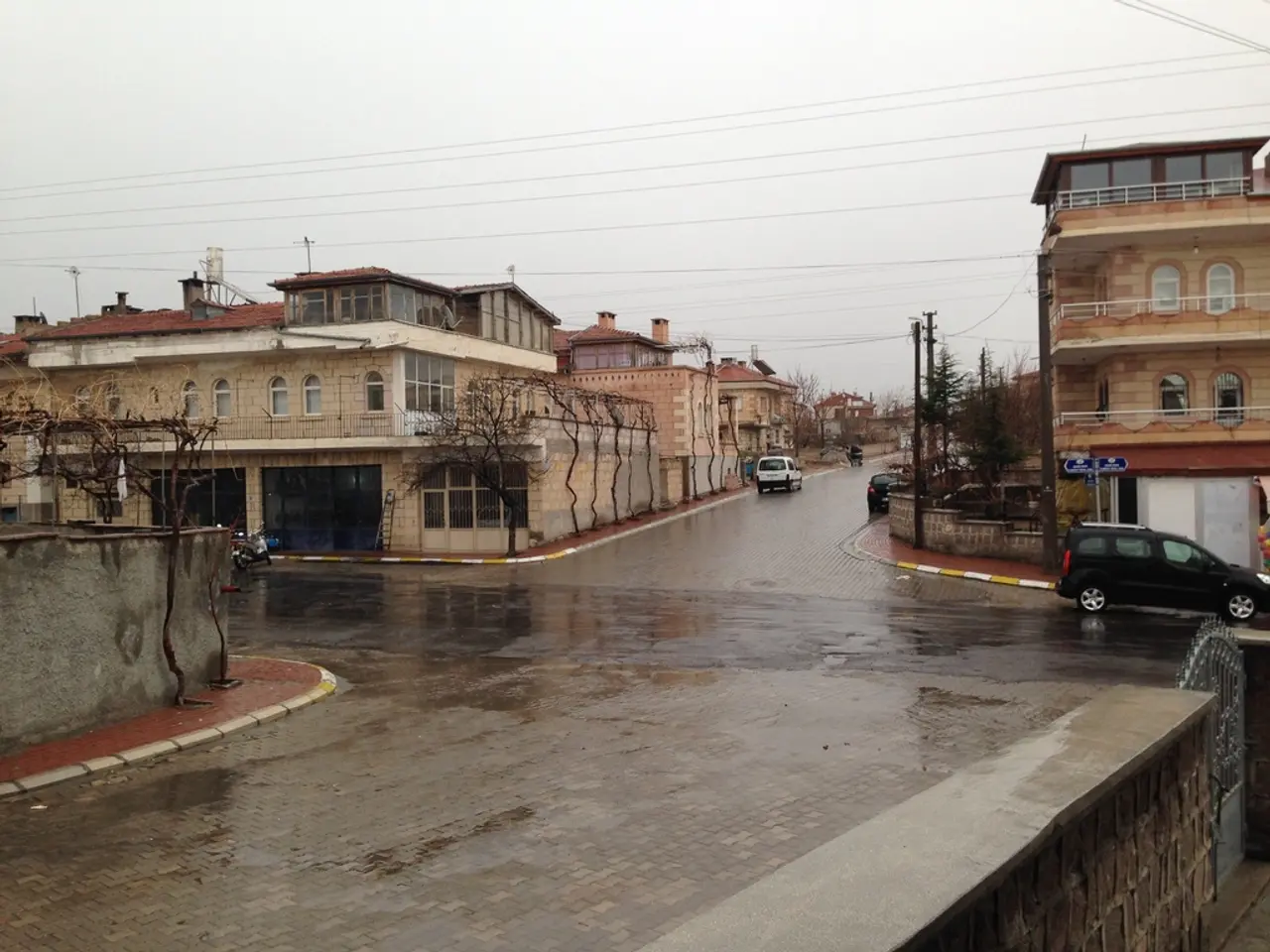Single-crystal movement monitored by researchers: Salt creep phenomenon detected at microscopic level
In a groundbreaking discovery, a team of researchers led by Joseph Phelim Mooney at MIT's nano-research facility have visually documented the subtle, recursive mechanism of salt crystal growth for the first time. The findings, published on June 30 in the journal Langmuir, provide a whole new way to understand surface fouling, material degradation, and controlled crystallization.
Salt creeping, the gradual intrusion or migration of saltwater or salts into various environments, has significant implications for fields like water scarcity, art conservation, and infrastructure design. In terms of water scarcity, salt creeping worsens the problem by contaminating freshwater sources, making them undrinkable and unsuitable for irrigation. This process not only diminishes freshwater supplies due to over-pumping but also contributes to the global freshwater crisis by causing deterioration, contamination, and functional loss.
In art conservation, salt creeping refers to salts migrating into porous materials like stone, wood, or plaster, crystallizing, and causing physical damage. This is a known challenge in preserving cultural heritage, where physical and chemical damage from salt crystals needs to be carefully managed.
Regarding infrastructure design, salt creeping leads to saltwater or salt-induced corrosion on concrete, metal, and other building materials. This corrosion deteriorates infrastructures like bridges, roads, pipelines, and water supply systems, shortening their lifespan and increasing maintenance costs. Moreover, salt-contaminated groundwater can undermine foundations and other subsurface structures, demanding new engineering approaches for resilience in coastal or salt-affected regions.
The new research published in the journal Langmuir offers a significant advancement in understanding salt creeping mechanisms at interfaces. The team used in situ X-ray microscopy to observe a single salt crystal pinning itself to the surface and initiating a cascading chain reaction of growth. This research can explain how and when scaling happens on equipment surfaces, potentially improving control over crystallization processes in zero-liquid discharge systems.
The study's findings are not limited to water scarcity, art conservation, and infrastructure design. They can also be applied to mineral and salt extraction applications, where salt creeping can be optimized for improved recovery rates and reduced material losses. Moreover, the research supports emerging climate technologies that depend on smart control of evaporation and crystallization.
By pinpointing the moment when salt begins to creep, engineers can better design protective coatings or drainage systems to prevent this form of degradation. The research can also help explain why and when salt crystals start growing across surfaces like concrete, stone, or building materials in civil engineering applications, offering potential solutions to combat salt creeping impacts more effectively.
The paper, titled "In Situ X-ray Microscopy Unraveling the Onset of Salt Creeping at a Single-Crystal Level," is available in the journal Langmuir. Mooney's co-authors on the paper include researchers from MIT Device Lab, University of Limerick, Georgia Tech, and Cornell University. This collaborative effort underscores the wide-ranging implications of the research, which could impact a variety of fields, including mineral extraction, desalination, anti-fouling coatings, membrane design, separation science, and art conservation.
- This groundbreaking research, published in Langmuir, reveals the intricate process of salt crystal growth, which could revolutionize our understanding of surface fouling and material degradation.
- The advances in understanding salt creeping mechanisms at interfaces could have significant implications for fields such as mineral and salt extraction applications.
- By optimizing salt creeping, recovery rates could improve, and material losses could be reduced.
- The research could also support emerging climate technologies that depend on the smart control of evaporation and crystallization.
- As salt creeping worsens, it contaminates freshwater sources, making them unsuitable for drinking and irrigation, aggravating the global freshwater crisis.
- In art conservation, salt creeping causes damage to porous materials like stone, wood, or plaster, necessitating careful management to preserve cultural heritage.
- Infrastructure design is influenced by salt creeping, leading to saltwater or salt-induced corrosion on concrete, metal, and other building materials, reducing lifespan and increasing maintenance costs.




